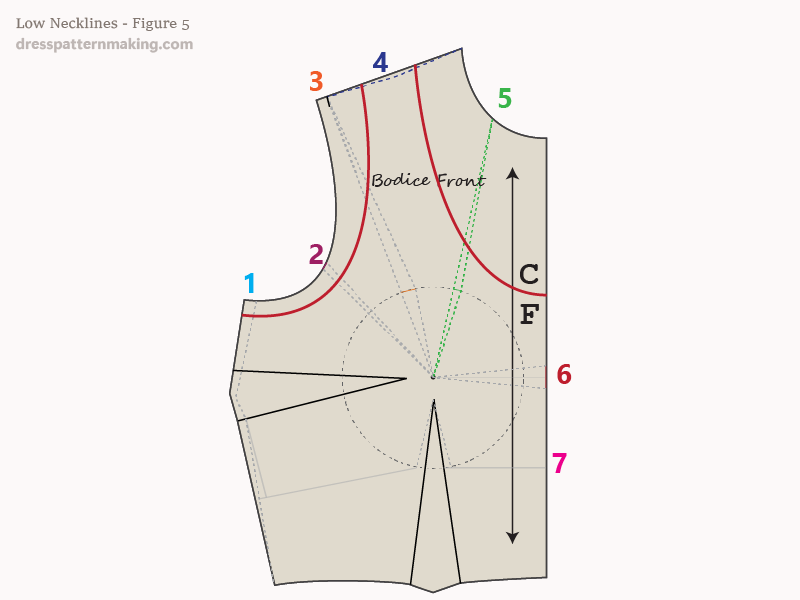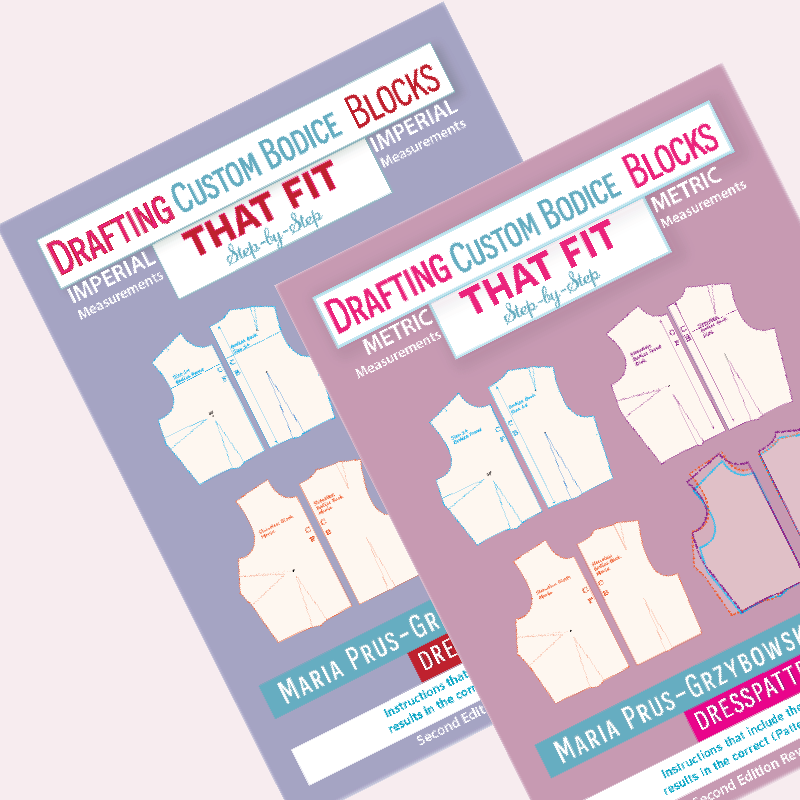Lowered Necklines
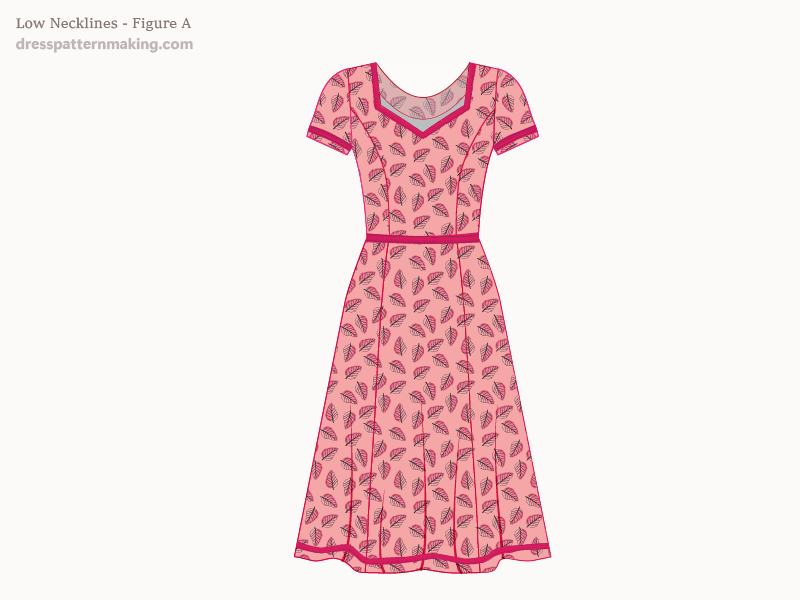
If you use your standard Bodice Block to create a garment with a lowered neckline, you will get gaping in the neck of the garment. The lower the neckline, the more gaping. The Contouring pages under the Principles Menu cover this issue in detail, with an explanation of why this occurs and how to make the necessary adjustments when making your pattern to avoid that gaping. There are seven pages in the Contouring menu, which follow on from each other and should be read in the order they appear in the menu. Below find a brief summary of the low neckline issue, which applies also to sleeveless garments, especially those with cutaway armholes. If you have both a low neckline and sleeveless/cutaway arm design, you need to make adjustments for both.
Summary
When creating garments with low necklines, you need to use a block that has contouring markings, and you need to know how to use that information. In order to mark that information on the block you need an understanding of Contouring. In order to use that information, you need an understanding of Manipulating Darts.
Example (Low Neckline) - Figure 1
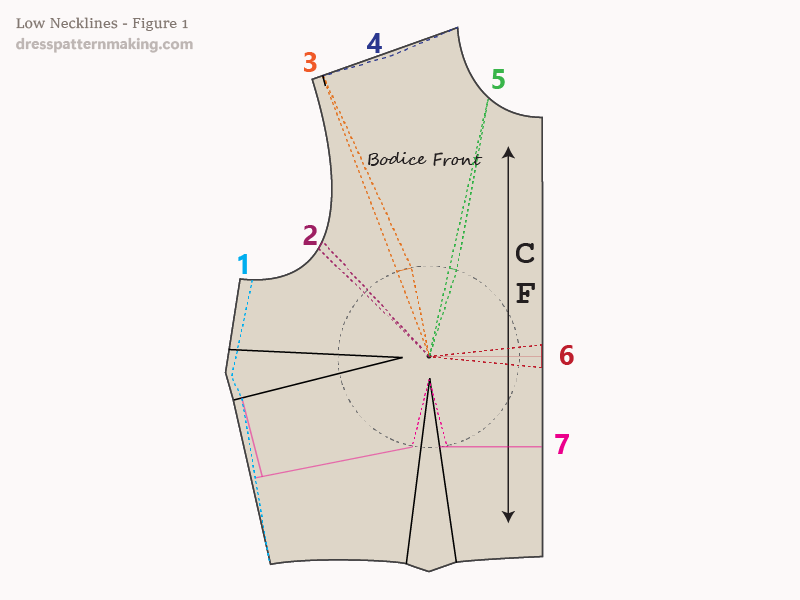
This is a Bodice Block (Front) that has contour markings. These lines show where gaping will occur - we will be looking in particular at the green lines (No.5) as they are the ones that relate to low necklines. (You will often have to take No.4. the shoulder line into account as well, but in this example we don't). See Figure 2 for an example of how this information helps you when you make a garment with a low neckline.
Example (Low Neckline) - Figure 2
In this image the neckline has been drawn on the block (left). Where the red line crosses the contouring marks shows you the amount of contouring that needs to be done. This shows the width of the gape that would occur at this level, and this gape dart needs to be moved - i.e. moved into a dart or a design line that is part of the design of the garment. In the traced pattern to the right in Figure 2, you can see how much gaping will occur with this neckline depth. Now this might not seem an awful lot (it's actually about 1/4-inch), but this is the half-block, so a 1/2-inch gape (1.25 cm) is significant. Don't forget also that this is a standard block - see Figure 3 for how much gaping there would be on my personalized block. See Figure 4 for how how to move this gape dart into one of the other darts.
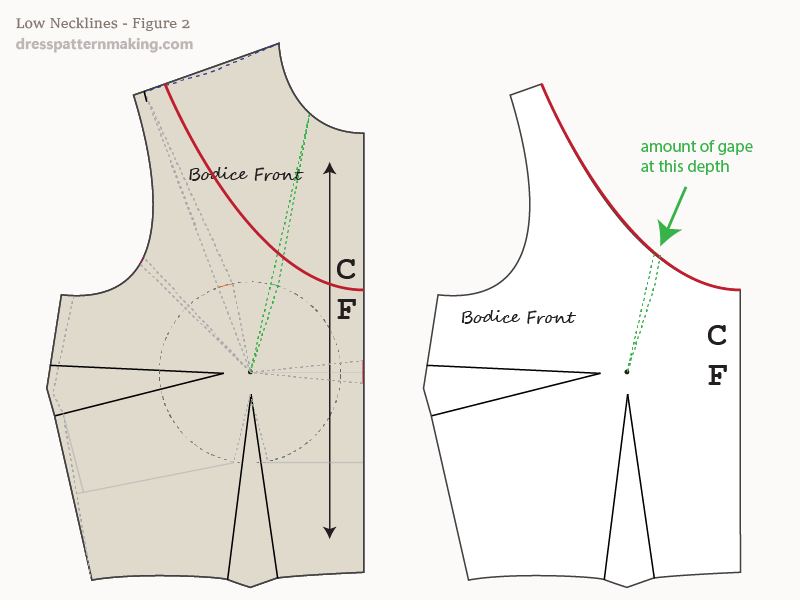
Example (Low Neckline) - Figure 3
This image shows my block with my contour markings - compared to the standard block above, I will have a larger amount to take in for lower necklines. My body form which shows why the contouring is needed.
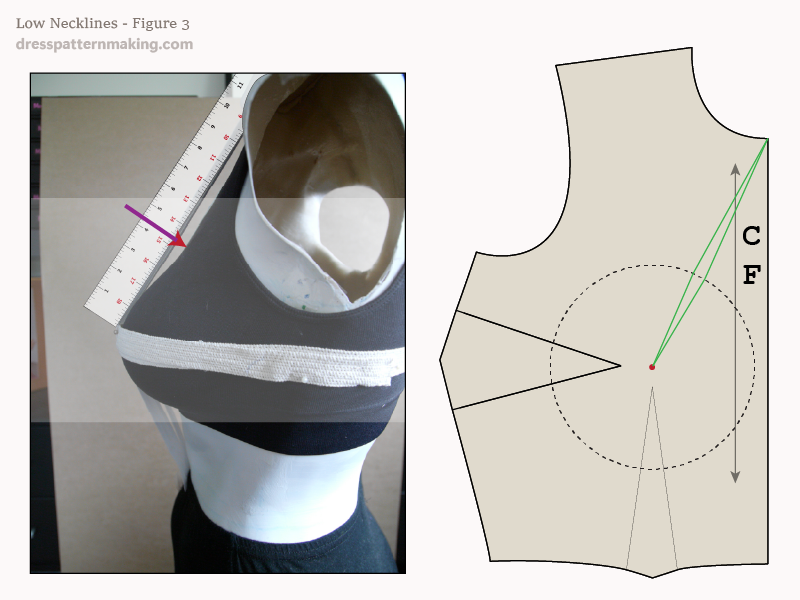
Example (Low Neckline) - Figure 4
The gape dart is moved into one of the other darts - in this case the side seam dart.
- The pattern is cut along the gape dart line to the Bust Point, and from the Bust Point along one of the other dart legs. The pattern piece is now in two pieces - in the image the armhole piece is shown in color for emphasis.
- The armhole portion is pivoted on the Bust Point until the gape dart is closed. Note that the side seam dart is increased.
- The neckline needs to be redrawn.
- The side seam dart needs to be redrawn.
Where the design crosses multiple contouring marks - they all need to be moved
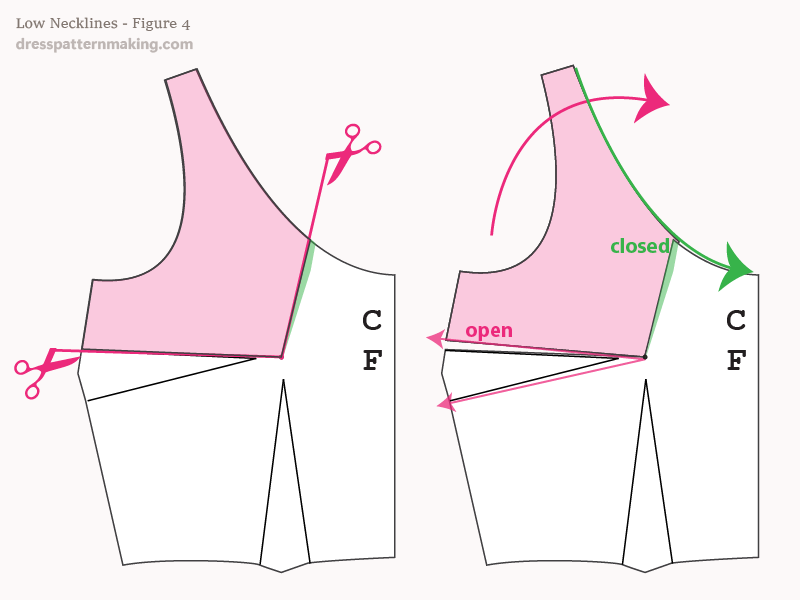
Example (Low Neckline) - Figure 5
The example above had a low neckline and the design crossed only one of the Contour Markings. In this image this design with cutaway arms and low neckline crosses 5 of the contour markings . Creating this pattern would entail:
- No 1 - reducing the width of the block.
- No 4 - changing the shoulder line slightly.
- No 2, 3 & 5 - moving these three gape darts into a dart or design line that is part of the design.
